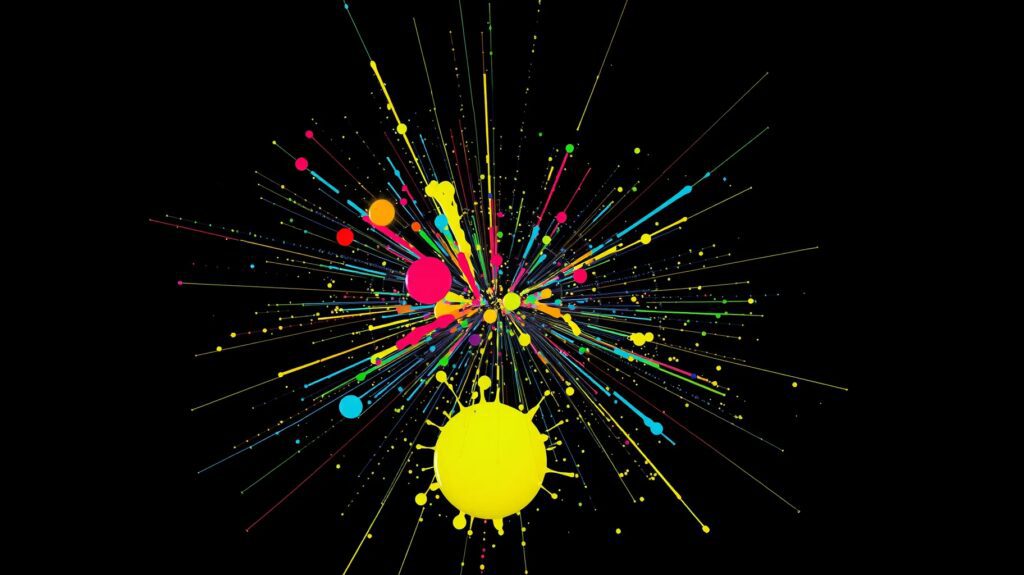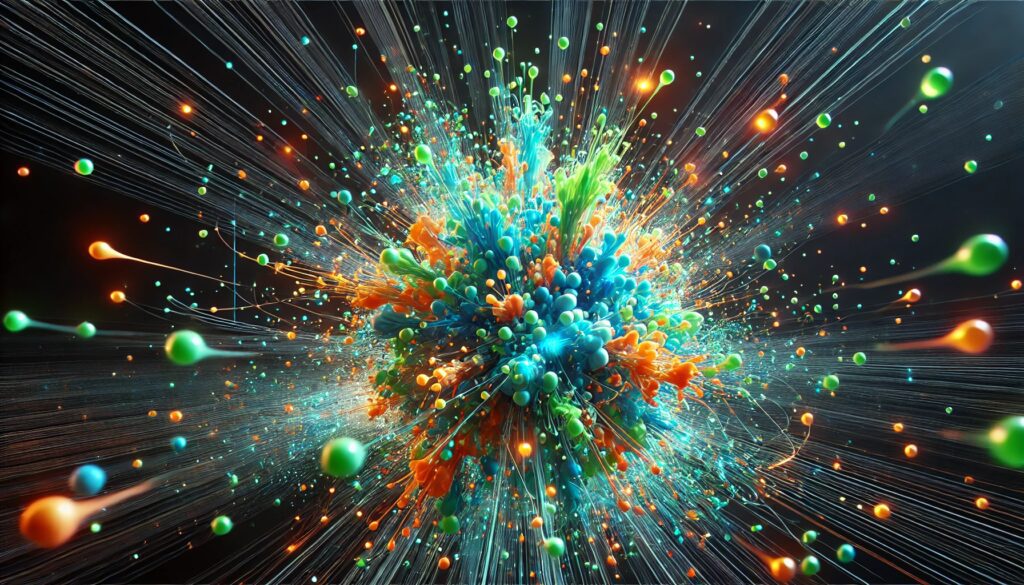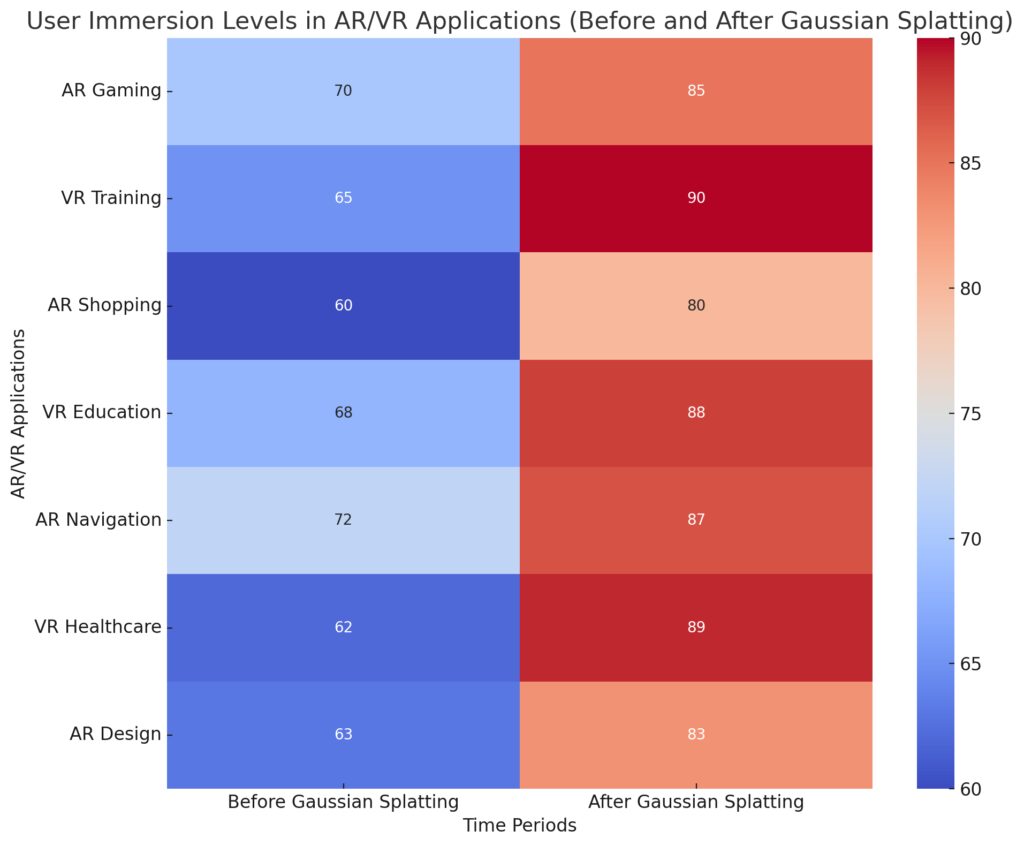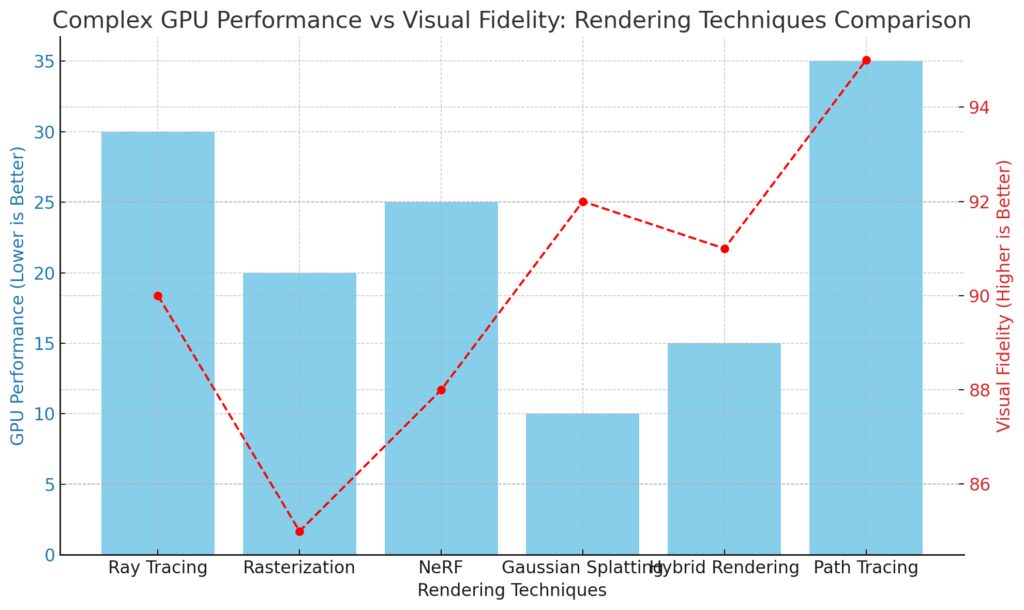
Bringing Virtual Worlds to Life
Imagine walking through a virtual forest so lifelike that you can almost feel the rustling leaves underfoot. Or, picture sitting in a virtual classroom where the teacher’s gestures and facial expressions feel startlingly real.
Augmented Reality (AR) and Virtual Reality (VR) are edging closer to this type of immersive experience, but achieving true photorealism in real-time has always been a technical hurdle.
That’s where 3D Gaussian Splatting enters the scene, creating a revolutionary approach that’s reshaping how we experience virtual worlds.
With AR/VR, the demand for not just detailed visuals but believable environments has skyrocketed. Gamers, designers, and educators alike crave seamless immersion, and this new 3D rendering technique could be the key to that dream. Let’s explore how 3D Gaussian Splatting is transforming the way AR/VR environments are built—and how it’s raising the bar on visual immersion.
The Need for Real-Time Photorealism in AR/VR
As AR and VR evolve, the line between digital and real-world experiences blurs. For an AR or VR environment to truly transport you, the visuals need to be convincingly lifelike, down to the finest detail—lighting, textures, and even how objects interact with each other.
Traditional rendering methods, while powerful, often struggle to keep up with the real-time demands of AR/VR, leading to frame rate drops, or visuals that simply don’t feel natural.
Photorealism has become a buzzword in AR/VR, but it goes beyond just hyper-detailed images. It’s about creating environments where everything—textures, lighting, shadows—responds dynamically. Imagine gazing at a sunset in VR and feeling as if you’re truly there because the light scatters through the trees just right.
Achieving this level of realism has always been the endgame, but now, with new breakthroughs, it’s becoming a more attainable reality.
What Exactly is 3D Gaussian Splatting?
Enter the game-changing technique of 3D Gaussian Splatting. Unlike polygon-based rendering, which has long dominated graphics, this method leverages Gaussian functions to represent 3D scenes in a much more flexible way. Instead of rendering millions of triangles, this technique renders “splat points” or blobs of color with varying densities, which are used to create smooth, natural surfaces.
These 3D Gaussian splats act almost like paint on a canvas. They cover areas of a 3D scene without the need for overly complex geometry, dramatically cutting down on the computation time. For AR/VR, this means more responsive, detailed environments without the lag.
It’s not just about speed, either. The softer edges and blending capabilities of Gaussian Splatting allow for more natural lighting and shading, offering smoother transitions between light and shadow that really add depth to a scene.
Enhancing Immersion: How 3D Gaussian Splatting Changes the Game
The potential of 3D Gaussian Splatting lies in its ability to render photorealistic environments quickly and efficiently. In AR/VR, this means environments can be more dynamic—responding to changes in user movement, interaction, or even the passage of time—without lagging or sacrificing detail. Immersion, the holy grail of AR/VR, is amplified.
Imagine an AR app that lets you walk through a historical site. With Gaussian Splatting, every stone, every shadow cast by ancient ruins, looks and reacts in real-time to your perspective. This makes you feel like you’re genuinely present in the scene, not just viewing a digital mock-up.
And because this method minimizes the load on graphics processing units (GPUs), it can be run on consumer-level hardware, making photorealism more accessible than ever.

What’s more, this technique improves the realism of dynamic lighting—a crucial component of immersion. Whether you’re moving from a dark cave into sunlight in a VR game, or watching light beams bounce off objects in AR, Gaussian splats capture these light interactions in real time, making the experience feel truly alive.
Overcoming Challenges: The Quest for Real-Time Rendering
In the race for photorealism, time has always been a critical factor. Traditional rendering techniques take time to calculate lighting, shadows, and textures, especially in complex scenes. But real-time rendering in AR/VR needs to be, well, real-time. A delay of even milliseconds can break immersion, reminding users that they’re still in a virtual space.
This is where 3D Gaussian Splatting excels. It achieves a balance between speed and quality, processing data points faster without compromising the visuals. The ability to reduce complexity in scenes, by using splats instead of polygons, leads to faster computations and smoother interactions. It feels more organic—like the real world, where light and textures don’t require a second thought to process.
But of course, this new technique isn’t without its challenges. In highly complex environments, ensuring that Gaussian splats don’t compromise edge clarity is still a work in progress. But researchers and developers are making strides to ensure this method becomes more adaptable to various settings, from simple AR filters to fully immersive VR worlds.
The Role of AI and Machine Learning in Splatting
Another key player in this evolution is artificial intelligence (AI). AI is making 3D Gaussian Splatting even more powerful by enabling systems to predict and adapt splat behaviors. Through machine learning, algorithms can optimize how and where these splats are rendered, ensuring that the most computationally demanding areas get the attention they deserve.
For example, AI can be trained to focus on rendering the finer details—like facial expressions in an avatar or the subtle movements of leaves in a breeze—while leaving less noticeable areas of the scene with fewer computational resources. This balance creates a more fluid, natural experience for users, allowing them to stay immersed in their virtual environments without distractions.
Developers Are Embracing 3D Gaussian Splatting for Next-Level Experiences
AR/VR developers are already harnessing the power of 3D Gaussian Splatting to push the boundaries of what immersive environments can offer. Major studios and indie creators alike are exploring how this technique can enhance everything from gaming to virtual meetings.
With this innovative method, developers can now focus on crafting more intricate, realistic environments without worrying about taxing system performance.
Take virtual reality games, for instance. Traditional rendering methods often forced developers to make a trade-off between visual detail and performance. But with 3D Gaussian Splatting, they can create breathtakingly detailed worlds that run smoothly, even in high-action scenarios. Characters in these games look more lifelike, with realistic facial expressions and smoother animations, making interactions more meaningful.
In the world of AR applications, the advantages are equally clear. Whether it’s an AR shopping app that lets users preview furniture in their living room or an educational app that brings historical artifacts to life, Gaussian Splatting helps make these virtual objects blend seamlessly with the real world.
The subtle realism of lighting and texture adjustments means users experience something much closer to reality, without any noticeable lag or glitches.
Enhancing User Interaction: From Avatars to Virtual Worlds
One of the most exciting applications of 3D Gaussian Splatting is in improving user interaction in AR/VR spaces. Avatars, which are often stiff or lack expression, can now take on a new level of realism. Think about how facial expressions and body language add depth to conversations in the real world.
With this technique, avatars in virtual spaces can mirror those nuances, making virtual meetings feel more personal and engaging.
Imagine a scenario where you’re in a virtual meeting, and the person across from you smiles. Instead of a flat or awkward animation, you’ll see the light catch their expression just right, making the moment feel authentic. These small but powerful enhancements to interpersonal interactions can make a world of difference, especially as more industries adopt remote collaboration tools through VR.
In virtual worlds, the effect is just as profound. Whether you’re exploring a fantasy landscape or attending a virtual concert, the added realism from Gaussian Splatting brings these worlds closer to something tangible. Shadows move as they should, textures feel rich, and light behaves in ways that mimic real-world physics.
All of this contributes to an experience where the barrier between the real and virtual world feels thinner than ever.
Applications Beyond Entertainment: Training, Healthcare, and Design
While 3D Gaussian Splatting is transforming entertainment, its potential stretches far beyond gaming and social experiences. Industries like healthcare, training, and architecture are also set to benefit from these advancements.
In medical training, for example, photorealistic simulations can help train surgeons or medical students with highly accurate representations of the human body. VR-based training modules can now feature detailed anatomical models that behave and look just like they would in a real-world scenario.
These simulations are critical for practice without risk, and with the improvements brought by Gaussian Splatting, the learning experience becomes even more immersive and effective.
For architects and designers, the technique offers new ways to visualize projects. Instead of working with static models or relying on clients to imagine a finished space, 3D Gaussian Splatting enables the creation of interactive, real-time walkthroughs. Clients can “walk” through a digital building as if it were already built, experiencing how light will flow through rooms, how materials will look in different conditions, and how the space will feel. This level of detail allows for better decision-making and collaboration between designers and clients.
The Future of AR/VR: How 3D Gaussian Splatting Might Evolve
As with any emerging technology, 3D Gaussian Splatting is likely to evolve as it becomes more widely adopted. Future improvements could focus on increasing precision in the rendering of complex environments, such as cityscapes or highly dynamic scenes with many moving parts. There’s also potential to reduce the size of the data required for these renders, making them more suitable for streaming or cloud-based AR/VR applications.
One area ripe for exploration is how haptic feedback—the sense of touch in virtual environments—can be enhanced alongside these visual advancements. As the visual component of AR/VR becomes more convincing, there’s an increasing need for other sensory elements to match this realism.
Combining Gaussian Splatting with innovations in haptics could lead to fully immersive environments that don’t just look real but also feel real.

The increasing role of AI and machine learning in rendering systems will also likely enhance the efficiency and adaptability of 3D Gaussian Splatting. As AI becomes more adept at learning how to optimize splat rendering in real-time, we may see an era of procedurally generated photorealistic environments that adapt and change based on user interaction, creating a more fluid and dynamic AR/VR experience.
Why 3D Gaussian Splatting is the Future of Immersive Experiences
In a landscape where immersion is key, and users demand experiences that feel indistinguishable from reality, 3D Gaussian Splatting offers a unique and promising solution. It not only tackles the challenge of real-time photorealism but does so in a way that enhances the overall user experience. With its ability to render complex, dynamic scenes efficiently, this technique is well-positioned to become a foundational element in the next generation of AR/VR technologies.
As industries from gaming to healthcare adopt this technology, we are on the cusp of an immersive revolution. The digital worlds we interact with—whether for play, work, or education—will feel more vivid, more alive, and more intertwined with our reality. 3D Gaussian Splatting may just be the magic trick that makes it all possible.
Balancing Performance and Visual Fidelity
One of the most significant challenges in AR/VR is the balancing act between performance and visual fidelity. Traditional rendering techniques, while powerful, often demand high computational resources, making it difficult for devices to run high-resolution, photorealistic graphics without lagging. 3D Gaussian Splatting, however, offers a unique solution to this issue by reducing the workload on GPUs, which allows for real-time rendering without sacrificing quality.
This opens doors for lighter AR/VR systems to deliver high-end visual experiences. Devices such as smart glasses or portable VR headsets could soon provide near-photorealistic environments on par with the high-end systems used in gaming or design, but without the hefty price tag or need for cumbersome hardware.
The lowered GPU demand is a game-changer, making immersive technology more accessible to casual users and professionals alike. No longer will high-end visuals be limited to those with top-tier systems. Instead, even users with standard devices could enjoy detailed, seamless virtual worlds without performance hiccups.

Paving the Way for Advanced AR Applications
In the world of augmented reality, 3D Gaussian Splatting is poised to have a massive impact. By allowing for real-time, photorealistic visuals to blend with the real world, AR experiences can feel more integrated and fluid. Imagine using AR for navigation, where not only digital signs or markers are overlaid on the real world, but they also react dynamically to your environment, adjusting with the lighting, shadows, and even weather conditions.
In industries like retail and advertising, AR applications could become more sophisticated. With 3D Gaussian Splatting, virtual objects like furniture, clothing, or cars can look almost indistinguishable from their real-life counterparts. Customers could preview products in real time, in their actual space, making purchasing decisions more confident and informed.
Education and training could also leap forward. Imagine an AR system that allows medical students to visualize detailed, life-like human organs in their real-world setting, or architects using AR to superimpose a completed building project onto a real construction site. These kinds of hyper-realistic and practical applications are made possible by Gaussian Splatting, unlocking new dimensions of learning and creativity.
Evolving Experiences for Gamers and Creators
For gamers, 3D Gaussian Splatting could be the secret ingredient to bringing virtual worlds to life in ways previously unimaginable. The technique allows developers to create expansive, intricate game environments where every corner feels like a part of a living, breathing world. Games will be able to deliver visual richness—lush forests, detailed cityscapes, and lifelike characters—with less performance trade-off.
For content creators, this technology presents a fresh canvas. VR filmmakers can build immersive worlds that are nearly indistinguishable from reality, giving audiences a new level of engagement. 3D artists can utilize Gaussian Splatting to render complex scenes in less time, focusing on creativity rather than being limited by processing power.
With these capabilities, indie developers and small studios can also compete with larger companies. They no longer need access to massive computing resources to create visually stunning experiences. The accessibility of 3D Gaussian Splatting democratizes the creative process, enabling a wider range of voices to shape the future of immersive content.
Conclusion: A New Era for Immersive Technologies
In conclusion, 3D Gaussian Splatting is more than just a technical innovation—it represents a shift in how we interact with virtual environments. By making real-time photorealism more accessible, this technique is redefining the potential of AR/VR experiences across industries. Whether it’s for gaming, education, healthcare, or retail, the ability to craft lifelike, responsive environments without sacrificing performance is groundbreaking.
As AR and VR technologies continue to evolve, 3D Gaussian Splatting will likely remain at the forefront of this transformation, enabling deeper immersion and more believable digital worlds. We’re just beginning to scratch the surface of what’s possible, and the future looks more realistic than ever.
In the end, whether you’re exploring a distant planet, designing a dream home, or attending a virtual concert, the line between reality and virtual spaces will continue to blur. And with innovations like 3D Gaussian Splatting, the virtual world is on the brink of becoming just as real as the one we live in.
Resources
Here are some reliable resources that can help you dive deeper into 3D Gaussian Splatting, real-time photorealism, and their applications in AR/VR:
- NVIDIA Developer Blog
NVIDIA is a leader in graphics technology, and their developer blog offers detailed insights into the latest innovations in rendering techniques, including real-time photorealism and GPU advancements.
NVIDIA Developer Blog - Google Research: Neural Radiance Fields (NeRFs)
NeRFs are closely related to Gaussian Splatting and are another cutting-edge method for photorealistic 3D rendering. This research blog provides a technical overview of NeRFs and their applications in creating more immersive virtual environments.
Google Research – NeRFs - Unity: Real-Time Rendering for AR/VR
Unity’s extensive documentation on real-time rendering techniques for AR/VR includes discussions on performance optimization, which is crucial when implementing advanced rendering methods like 3D Gaussian Splatting.
Unity Real-Time Rendering for AR/VR - MIT Technology Review: The Future of AR/VR
MIT Technology Review often features in-depth articles on the evolution of AR/VR technologies, including recent breakthroughs in rendering and immersion. This could offer broader insights into the future landscape of immersive tech.
MIT Technology Review – AR/VR - SIGGRAPH Conference Papers
SIGGRAPH is one of the most prominent conferences in the field of computer graphics. Their conference papers often explore innovations like Gaussian Splatting, real-time photorealism, and their use in AR/VR applications.
SIGGRAPH Papers